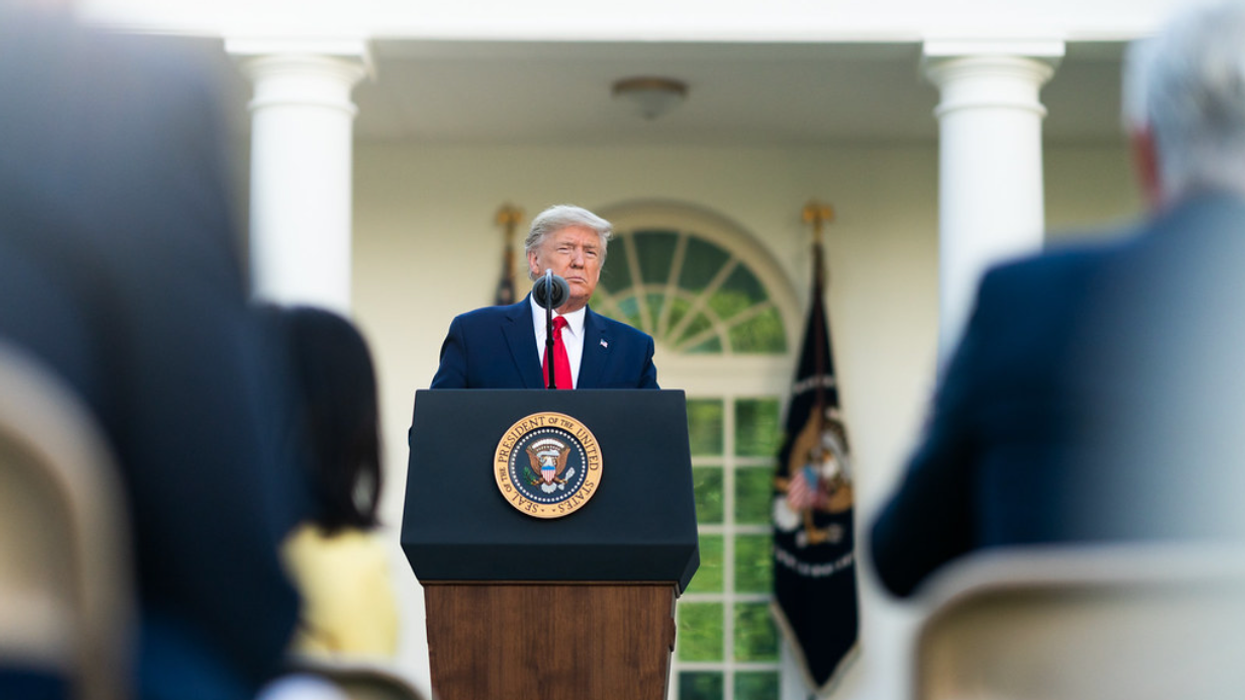Mainstream Media Suddenly Remember Trump Is Crazy Dangerous
On Thursday, The New York Times published an editorial accurately noting that Donald Trump is "dangerous" and "unqualified" to be president.
“[Trump] has demonstrated an utter lack of respect for the Constitution, the rule of law and the American people,” the Times’ editorial board wrote. He is “animated by a thirst for political power: to use the levers of government to advance his interests, satisfy his impulses and exact retribution against those who he thinks have wronged him.”
That’s all true. And it would be better if it didn’t come several paragraphs into an editorial that starts off complaining about “the post-Covid era of stubborn inflation, high interest rates, social division and political stagnation.” Not to mention running it on the same morning that inflation dropped to three percent, raising the strong possibility of an interest rate cut, with the biggest concern being that unemployment rates are too low.
But at least the New York Times has taken a moment to notice that Trump still exists. It's a nice change after a week in which it, and every other media outlet, have been dominated by stories of anyone with a passing thought about President Joe Biden’s campaign.
Numerous papers have dropped editorials calling for Biden to drop out of the race following an unsteady debate performance. They are still at it. Before the Times ran their column on Thursday, only The Philadelphia Inquirer made a similar call for Trump to depart after his debate responses were filled with lies and fantasies about everything from immigration to the January 6 insurrection.
Thursday’s Times not only carries that editorial declaring that Trump is unqualified, but it also carries a front page notably less cluttered with thoughts on Biden’s viability as a candidate. That seems like a good sign ahead of the president’s press conference on Thursday.
Still, there seems to be more concern in the media over noting every entertainer who has a thought about Biden—or even those who might have a thought—than in the long list of former Trump officials who want nothing to do with their old boss. It might seem like the fact that Trump’s former vice president is refusing to endorse him might rate more attention than any actor. It should.
The challenge for the New York Times and others isn't whether they will give Trump’s nastiness an occasional mention, but whether they will provide the kind of sustained and focused coverage that has been devoted to Biden's status post-debate.
Because, believe it or not, there has been good news for the media over the last week.
Analysis shows that among Black voters who watched Biden’s debate performance, 21 percent had their view of Biden negatively impacted while 70 percent said the debate had made them more likely to vote for the president. However, 57 percent of Black voters who didn’t see the debate said they were now less likely to vote for Biden, with only 43 percent more likely.
The big negative effect for Biden came not from the debate, but from people talking about the debate.
How is that good news? It’s good news for the national media in the sense that shows how much power remains in their control. The sustained media coverage concerning Biden’s debate performance, and of Democrats dithering in response, has been much more impactful than Biden’s actual debate performance.
That may come as a surprise to Politico writer and MSNBC correspondent Sam Stein.
As it happens, there is a whole industry that is supposed to be telling voters about that good news. They could do that. They could explain that we’re not seeing “stubborn inflation” and that economic conditions have improved vastly following Trump’s departure. They might even point out that the Trump economy was absolutely awful, no matter what he claims.
They could give Trump’s lies the kind of intense, sustained scrutiny that they provided to Biden’s every stumble. They could provide the same breathless attention to every former Trump cabinet official who refuses to get near him today, as they’ve given to every Democrat worried about Biden’s prospects. They could talk about the lies Trump told at his debate and continues to tell at his rallies.
They could do that. And people would listen.
What the last week has demonstrated is that the media really can give concentrated attention to a single issue, and that attention can still sway the opinions of voters in an age where the role of the media is frequently in doubt. Good for them.
Now they just need to make it good for America—by pointing this power in the right direction.
Reprinted with permission from Daily Kos.












